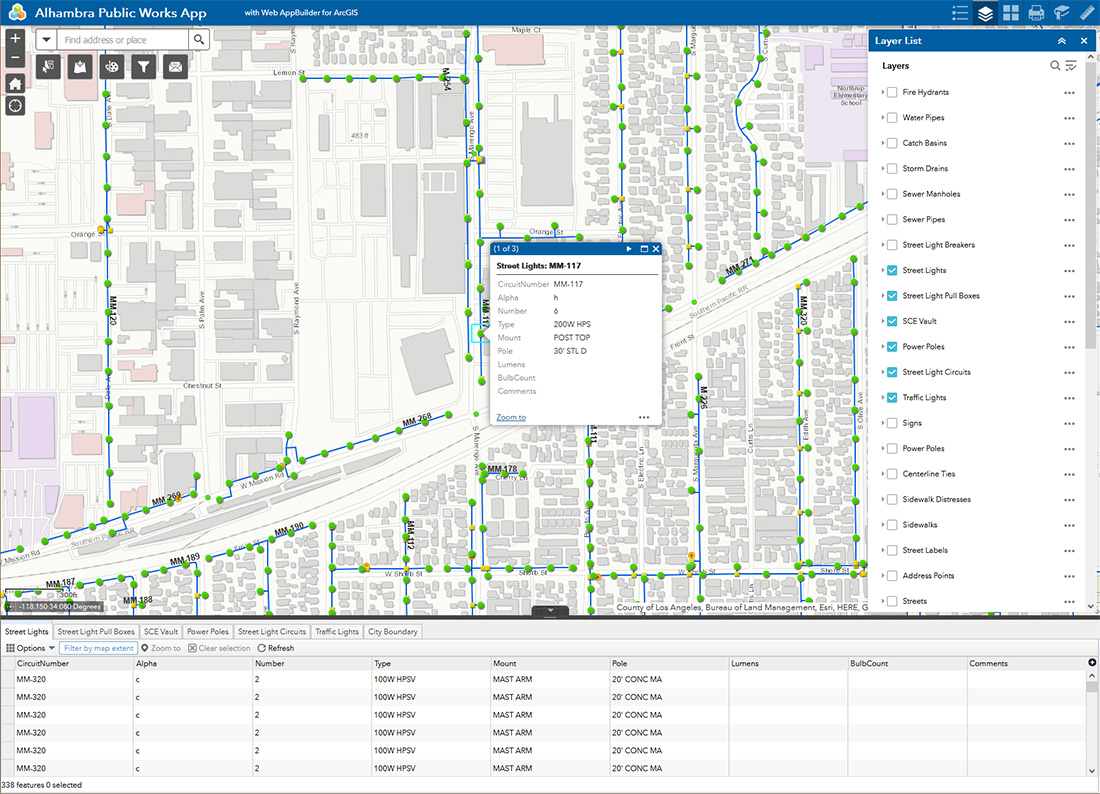What is GIS?
A Geographic Information System (GIS) is a framework for gathering, managing, and analyzing data. Rooted in the science of geography, GIS integrates many types of data. GIS reveals deeper insights into data, such as patterns, relationships, and situations—helping users make smarter decisions.
Understanding the client's needs, expectations and budget.
We take a common sense approach when we make software and hardware recommendations. Cities are often sold software packages that are not needed until the GIS is mature and a full-time GIS staff is present. We recommend a phased approach to building the GIS that allows the City to invest as department needs are identified.
What are the advantages of Geographic Information Systems?
- Improve data quality and access
- Coordinate projects citywide
- Streamline common tasks

Data Driven Decisions
Spatial analysis is changing the way the world works by allowing you to evaluate suitability and capability, estimate and predict, interpret and understand, and much more, lending new perspectives to your decision-making. This is also referred to as Data Driven Decisions. GIS technology applies geographic science with tools for collaboration and understanding by incorporating relevant data to be analyzed spatially to identify patterns, relationships and correlations thus allowing users to make more informed decisions.
GIS... A Phased Approach
We recommend a phased approach to building a City Geographic Information System. This allows the City to efficiently allocate funds and gauge accomplishments while getting the highest ROI.



Phase I : Publishing
The initial goal to setting up a GIS is to gather and assess all available datasets and publish them to a web-based mapping application such as ArcGIS Online. Users and web maps are set up to give all City employees access to the data in an interactive map.
Phase II : Tools
The second phase includes digitizing simple datasets such as City Council Districts and Truck Routes. The data published during this phase is relatively fast and easy to create. Additionally, tools are incorporated into the interactive map to allow Filtering, Measuring, Public Notification, etc.
Phase III : Growth
The final phase of GIS integration is the digitizing of complex datasets such as Water, Sewer and Storm Drain Systems that require a large work effort to create. As the City GIS matures, hardware and software upgrades are advised as needed.
Contact us for a free consultation! 760-216-6529
Sample ArcGIS Online Application

Common Managed GIS Datasets
- Aerial Imagery
- Parcels / Addresses
- Benchmarks
- Vacant Parcels
- Pavement Management Plan
- Water System / Fire Hydrants
- High Fire Severity Areas
- Electrical
- Sewer Systems / Manholes
- Zoning
- Land Use / General Plan
- Sphere of Influence
- Centerline Ties
- Signs
- Public Facilities
- Planning Commission
- Street Centerlines
- Street Lights / Circuits
- Street Sweeping
- Street Legends / Striping
- Street Moratoriums
- Curb Markings
- Truck Routes
- Parking Lots
- Fiber Optic
- Traffic Elements
- Trash Collection
- Sidewalks / Distresses
- ADA Ramps
- ABC Licenses
- Bus Routes / Stops
- Code Enforcement
- Trails
- Trees
- Contours
- Slope / DEM / Hillshade
- Easements
- HUD
- Environmentally Sensitive Areas
- HOA
- Capital Improvement Projects
- CDBG
- Elected Districts
- ROW Assessor Maps
- Tax Districts
- Overlay Districts
- Schools
